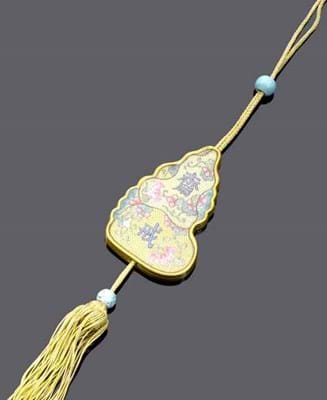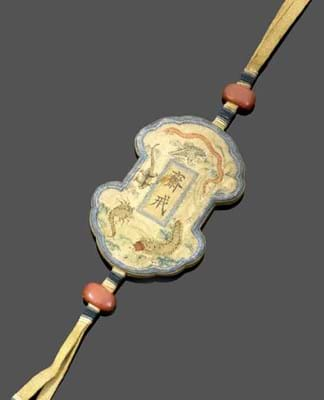The abstinence period usually lasted for three days, during which courtiers were to refrain from eating meat and fragrant herbs such as onions, chives, garlic and the like, from consuming alcohol, and from any intimate acts.
To signal a period of abstinence, pendant plaques were worn displaying inscriptions in both Chinese and Manchu.
The Fernandes collection sold by Woolley & Wallis of Salisbury on May 22 included nine different examples fashioned in a range of luxury materials including tortoiseshell, agate, jade, famille rose porcelain, rock crystal, mother-of-pearl, lacquer and textile. The examples pictured here are both rarities.
Estimated at £5000-8000, but sold at £47,000, was a Qianlong period Imperial porcelain gourd-shaped plaque decorated in the famille rose palate with scrolling flowering vines, bats and small gourds and the characters zhai jie in Chinese to one side, the Manchu characters bolgomi karga to the other. It retained a silk tassel for suspension mounted with turquoise beads. Sotheby's sold an identical plaque in 2008 for £8000.
The 18th/19th century kesi textile abstinence plaque - similarly inscribed - was made specifically for the dragon boat festival. The Qing 'five poison' insects and amphibians surround the text. Estimated at £1500-2500, it took £38,000.
These sums took abstinence plaques to new price levels (at least in the context of Western salerooms) although, as ever, the market is difficult to read. A Qianlong abstinence plaque offered by Bonhams, worked in gold with precious stones and enamel, failed to sell with an estimate of £20,000-30,000.








